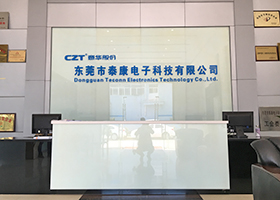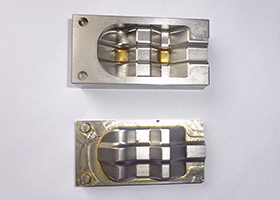ESD and EMI interference in mobile phones - solutions for audio system connectors
This article briefly explores the causes and consequences of ESD and EMI in connectors for audio systems in mobile phones. Then discussed the use of mobile phone audio system connector ESD interference suppressor and EMI filter to avoid these threats. Finally, the current three solutions are compared.
Modern materials and technology cause connector electrostatic discharge (ESD) and electromagnetic interference (EMI), and become a frequent danger. Our items that come into contact with us can cause electrostatic discharge. Digital technology has electromagnetic interference. Electrostatic discharge can damage the electronic components in the phone. Mobile phone easy to replace, but the great harm to the user. The handset circuit designer must ensure that the necessary measures are taken to eliminate ESD damage in the electronic connector.
In the case of electromagnetic interference in the audio connector (EMI), there will be hissing, crackling, buzzing and other sound, poor sound quality. Mobile phone users can not stand such interference. Therefore, you must try to filter the audio circuit of the electromagnetic interference.
Electrostatic discharge causes, results and suppression
Almost everyone has experienced the effects of static electricity. When we were a caveman of prehistoric stone age, we have seen it in lightning. Of course, it is still a major threat today, everywhere. With a plastic comb hair, you can see the static charge generation. Place your arm near the TV screen and you will see the hairs on your arm erect. This is also an electrostatic effect.
When you open the door and get out of your car, you may feel a shock, which comes from electrostatic discharge. As home and workplaces have more and more electrical equipment, static electricity is a continuing danger. People who make or repair electrical equipment want to protect themselves and work with equipment that connects themselves to the equipment in order to avoid the harm caused by electrostatic discharges of electrical equipment.
We can see lightning striking buildings and trees, it has destructive power. If the ESD protection of an electronic circuit is not optimal, even a small amount of discharge can damage the sensitive electronic circuit, which is already detected. The connector in the phone has some ESD protection. External connectors for audio circuits are the most common source of ESD. Simply plug in the headphones and speakers, which may mean that the phone will be affected by ESD.
As with all products, the handset must be qualified for ESD according to IEC61000-4-2. The regulations stipulate that the mobile phone can withstand 15kV air discharge (through 330Ω / 150pF), that is, the current through 45A is not less than 1 nanosecond. In this case, the phone should be able to continue working without being destroyed. The above is a comparison of a high energy pulse with an ESD human body model experiment. In order to protect the main chip, additional ESD protection must be added at each potential ESD entry point. In general, a device that suppresses ESD generates a controllable output, called a clamp voltage.
Electromagnetic Interference EMI - causes, results and filters
Current flows, creating a magnetic field around the conductor. Current changes, the magnetic field will change. Therefore, simply switching current, which will produce changes in the magnetic field. Changes in the magnetic field can cause other conductors near the signal. The above is the basic electrical principle.
Household and industrial electricity use 50Hz or 60Hz AC. This is the audible frequency range. As the current continues to change, conductors near the same frequency will produce a signal. If you use Hi-Fi, use separate players and loudspeakers, while their chassis is not connected together, you will hear the buzz.
Thinking about today's electronic world, everywhere the signal continues to change: 1. Audio input / output can produce radiation and conducted EMI, and then launch a higher frequency RF line, resulting in signal distortion. 2. The cellular phone antenna (TDMA pulse) emits a radio frequency signal that can be received by a long-term headset, resulting in EMI noise in the audio signal path.
The GSM standard uses frequency division multiplexing and time division multiplexing, while transmitting a large number of telephones.
A specific phone only emits when it belongs to its time slot. The fundamental frequency of the envelope signal is 1 / 4.615 ms = 217 Hz. Harmonic frequency of 434Hz, 651Hz and so on. Such frequencies are audible. As shown in Figure 4, for the mobile phone envelope signal.
As a result, when the handset communicates with the base station, or the two handsets are close to each other, the transmitted pulse passes through the audio path through the loudspeaker or the headset line, resulting in a significant reduction in audio quality.

 Company Profile
Company Profile Company Culture
Company Culture Honor
Honor Corporate image
Corporate image Video Center
Video Center Connector series
Connector series Structural parts series
Structural parts series Machining series
Machining series Mold Center
Mold Center Product information
Product information Corporate videos
Corporate videos Company News
Company News Industry News
Industry News Contact
Contact Feedback
Feedback Recruitment
Recruitment
